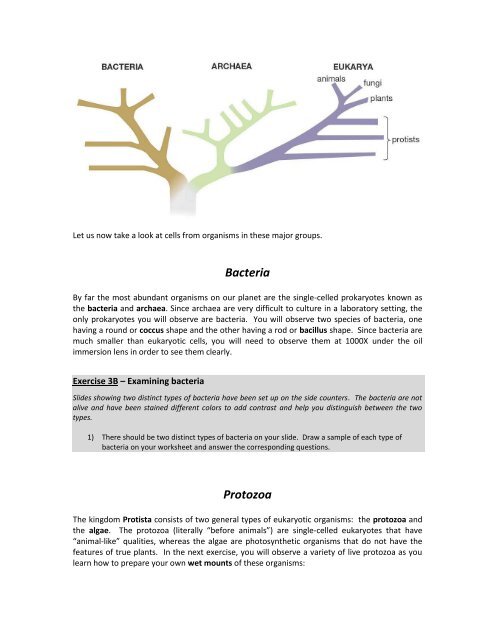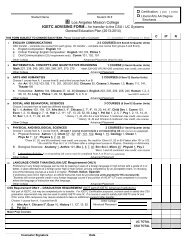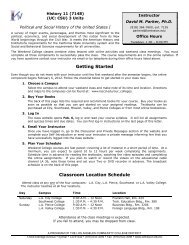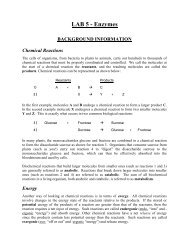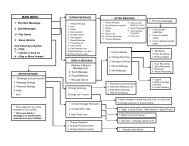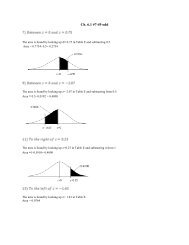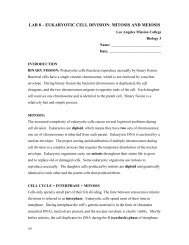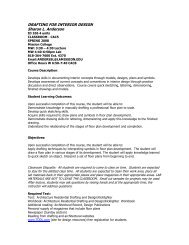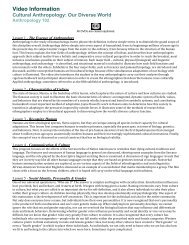Lab #3
Lab #3
Lab #3
Create successful ePaper yourself
Turn your PDF publications into a flip-book with our unique Google optimized e-Paper software.
Let us now take a look at cells from organisms in these major groups.<br />
Bacteria<br />
By far the most abundant organisms on our planet are the single-celled prokaryotes known as<br />
the bacteria and archaea. Since archaea are very difficult to culture in a laboratory setting, the<br />
only prokaryotes you will observe are bacteria. You will observe two species of bacteria, one<br />
having a round or coccus shape and the other having a rod or bacillus shape. Since bacteria are<br />
much smaller than eukaryotic cells, you will need to observe them at 1000X under the oil<br />
immersion lens in order to see them clearly.<br />
Exercise 3B – Examining bacteria<br />
Slides showing two distinct types of bacteria have been set up on the side counters. The bacteria are not<br />
alive and have been stained different colors to add contrast and help you distinguish between the two<br />
types.<br />
1) There should be two distinct types of bacteria on your slide. Draw a sample of each type of<br />
bacteria on your worksheet and answer the corresponding questions.<br />
Protozoa<br />
The kingdom Protista consists of two general types of eukaryotic organisms: the protozoa and<br />
the algae. The protozoa (literally “before animals”) are single-celled eukaryotes that have<br />
“animal-like” qualities, whereas the algae are photosynthetic organisms that do not have the<br />
features of true plants. In the next exercise, you will observe a variety of live protozoa as you<br />
learn how to prepare your own wet mounts of these organisms:


